HIStalk Interviews Kim Sell, President, Clinical Computer Systems, Inc.
Kim Sell is president of Clinical Computer Systems, Inc. of Elgin, IL.

Tell me about yourself and the company.
I started working in healthcare in 1992 for our predecessor company, Peritronics. I left that company in 1997 and started a service company, Clinical Computer Systems. In 2001, we acquired Peritronics and have grown it since then. Today we are a 100 percent employee-owned company that is focused on OB data systems. We have about 100 employees and plan to grow that another 10 percent this year.
How does an employee-owned company work and how does that impact the company’s philosophy and strategy?
We can focus on the things that we think are important to our company culture, to our customers, and to our employees. We don’t have outside shareholders or an exit strategy that we have to worry about with a three- to five-year horizon. We can do what we feel is right for customers and employees at different times without the constraints of outside capital. I don’t think outside capital is wrong — we have evaluated outside capital at different times for ourselves — it just has to be done at the right time for the right reasons.
Obix is FDA approved as a medical device. How does that change how your developers work?
I don’t know that it’s a massive change, but it definitely does introduce a different level of internal review and consideration of what we’re doing for the patient, for the customer. It also helps to define the market a little bit more, where it is a market that has some risk that sometimes a larger company or a different type of company wouldn’t want to enter this space. There are some differences that it does create and it’s risk. You have a government entity that could basically walk in at their choosing and shut down or challenge the company’s premise at any time.
I think we have a more stringent review process and a more stringent testing process that goes out. Also, it gives our customers another voice. If they’re not happy with how we perform, we also have to be aware that there’s a government regulatory body that they can go to to complain about us, challenge how we do things and how we’re satisfying them. Risk review and risk evaluation.
What are the clinical and legal issues faced by your perinatal technology users that are different from the rest of the hospital?
It’s one of the few, if not the only, area of healthcare where it’s really not an illness. Having a baby, having a pregnancy in and of itself is not something that is not a defined illness. A patient goes into a hospital in that condition and exits usually even happier.
The risks that go with that, though, are that it’s also one of the most litigious or most expensive areas of the hospital. The last stat I I saw behind anesthesiology is that it’s the most litigious part of the hospital in terms of settlements and risk management. It’s an area where they have to make sure they’re covering their bases and making sure that they’re doing the right things not to create exposure for the hospital. We help with that, making sure the care protocols are right, that they’re following the right care paths, and are evaluating the patients appropriately.
Do most L&D areas use software to assist them in the perinatal process or do some still use paper?
It’s a replacement market for us. I would say probably ninety percent of hospitals that have a labor and delivery department have a central monitoring system. We maybe run into one or two a year that do not.
Where does Obix go from here?
Our history has been focusing on services and integration with enterprises. The last few years with ACA and Meaningful Use, we’ve been focusing on trying to create a product that’s fully integrated, where you almost can’t tell the difference between our product and what is … everybody’s driving towards a single source of truth type of product and trying to support that strategy and make that useful for the users.
The enterprise products, many times, aren’t developed for the work flows and some of the unique situations for certain critical care areas of the hospital, L&D being one of those. We try to tailor our product to help support the user, support that big investment that the hospital has made in the EMR.
How do you convince a hospital that it’s a good idea to go with Obix rather than a product from their EHR vendor?
Other than Cerner, the other primary vendors really don’t have an OB product. Our competition at that level isn’t the EMR, but other perinatal specialty companies or companies that have perinatal products.
We work at messaging what the strength of our product is in terms of uptime and in terms of service and support. Service and services are a big part of what the company was founded on, has evolved with, and will always work to stay with in the future to make sure that it’s not just about dropping a product in place and saying, “There you have it” and walking away, or, “Issue a purchase order for more services.” We have a very integrated solution where it’s purchase the product, issue a support agreement, and we provide all the services around that. That’s really all a hospital has to provide.
Who makes the decision to buy your product?
That’s a trend that has changed a lot over the time I’ve been in the industry. When I first started, it was a lot of the doctors. Then it went to the nurses, nursing staff, went to IT. Now, honestly, we’re mostly in administrative decisions because of the purchasing cycles that things are bought in. We are starting to see physicians to have a larger voice again, but that’s a more recent trend.
You mentioned malpractice. Do you have plans to integrate a video record of what happens in the delivery room?
Not for us. I would suggest that’s another specialty area. When you get into recording the actions of what happens in the room, there’s a whole different set of issues that a hospital’s concerned about that I think are best dealt with a different specialty company and product if that’s a direction a hospital would decide to go into.
Is remote access important?
Oh, very important. I don’t know that we even think about it as remote access any more. It’s just access to information. The access to the information has to be the same in the patient room as it is for a doctor that’s at home at three o’clock in the morning trying to access the information.
Our biggest challenge around that is keeping customers up to date with our most current releases that have the better functionality around that. We have a number of customers that implemented software 10 years ago and really struggle to encourage them to keep upgrading the software and keep it current.
Obix has won the KLAS rankings quite a few times in a row. How do you use the feedback from users that KLAS provides?
It’s a big part of the sales process. It’s a big part of our business process, though, too.
We take a look at the KLAS comments. It’s not just the comments about us., it’s the comments of our competitors. We try to learn from everybody ourselves and our competitors and see what the industry is saying because it is a good way to get an unvarnished set of information and feedback from customers. To pay a market research group to do your own research sometimes gets some biases involved with it, where you’re looking for some specific things. I don’t always agree with some of the things that KLAS comes out with, but it does give us some good feedback to change how we operate as a business and to try to provide the services and functions that our customers are looking for.
Where do you take the company from here? Do you just keep working to gain market share or start thinking about developing other products?
We’ve considered a number of different avenues down that path. We have decided to stick with being a niche vendor in the obstetrical space. We are looking at other products and functions down this line, but I don’t see us growing out and trying to become another multi-disciplinary, multi-area vendor. I think it’s important for us to try to hold on to our specialty and focus on creating a best product and best services in that area.
Do you have any final thoughts?
I’m very thankful for the people that we have in the company. Of all the things that we deal with — with people, industry, and customers — finding and recruiting good and talented people within the company is one of the most challenging things we do. We work at improving that every day.
I see a lot of challenges coming forth, though, for our hospitals and healthcare organizations that we support. You’re seeing consolidation or trading of organizations in enterprises to consolidate market share. That’s going to create some new and different challenges both for the hospitals and the vendors that support them. Some of it’s good, some of it’s bad in terms of what that concentration does to different companies. We are making changes in our organization to support that. We’re trying to make our product lighter, faster, and easier to implement.
We just brought a new feature online called Obix University, which is an LMS platform that allows us to change our education process to be a continuous education process that’s online all the time, or it will be shortly. It’s something that helps reduce the implementation cost as well. There’s a number of other services that we’re looking at to do that. Again, trying to support that enterprise view, because part of it is about getting new customers, but part of it is also about retaining the customer base that we have and making that upgrade path a lot easier for them.








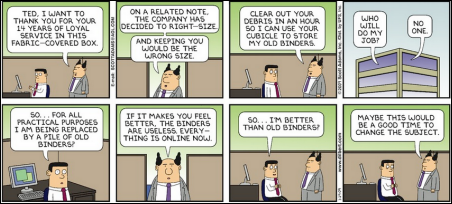










































































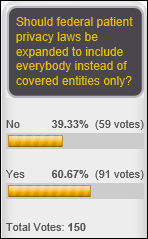




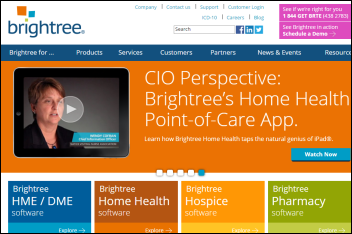
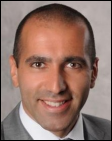



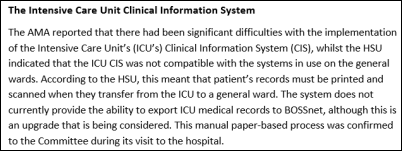




The CEO sentenced to jail for massive healthcare fraud will get pardoned in a week.